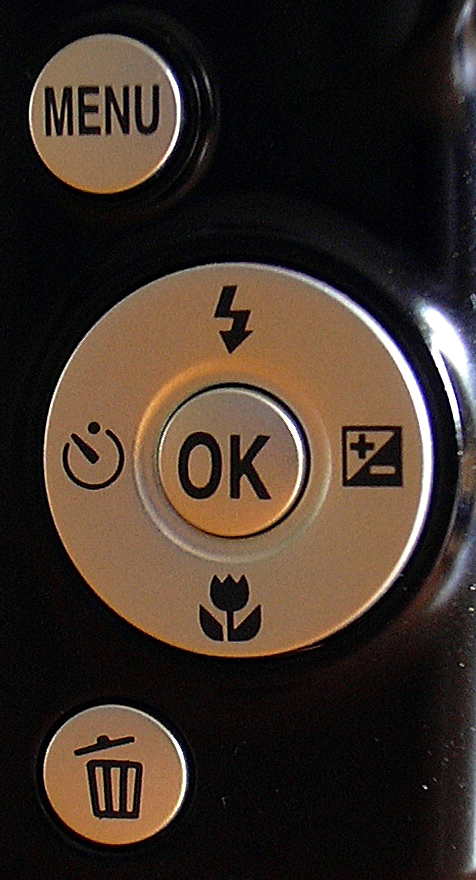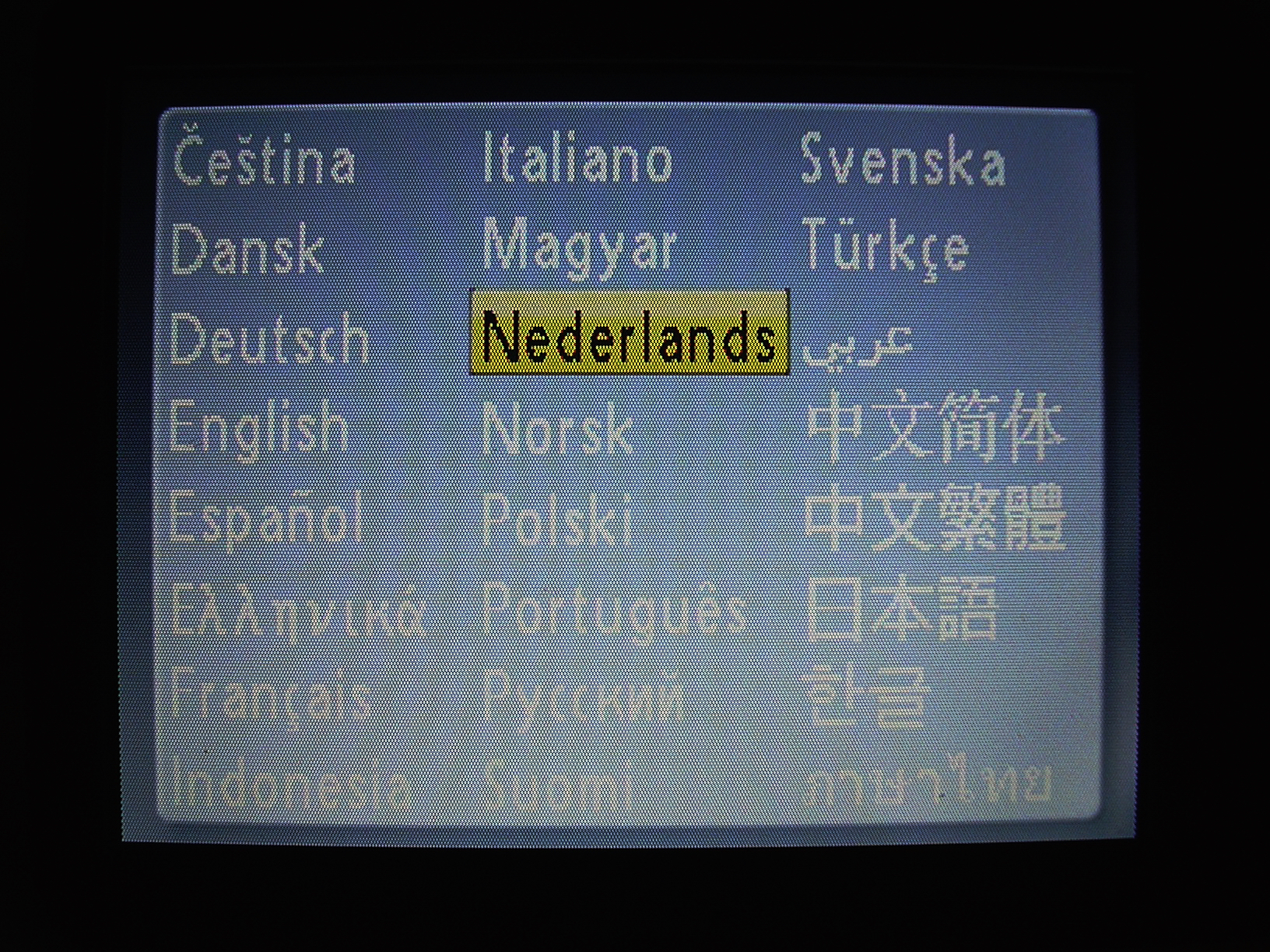Nikon Coolpix L-, S-, P- and AW-series
Late 2003 Nikon comes to a point at which it changes the names, numbers and codes of its digital compact cameras. From now on the name 'Coolpix' will be combined with one out of three letters referring to: L = Life series; S = Style series and P = Performance series. Behind the letter a number (1, 2, 3 or 4 digits) is added. The L-series cameras are made for the starters in photography. They are packed with various - fool proof - automatic programs, simple and easy handling and sold at low to modest prices. The S-series consists of special (trendy) design and sophisticated techniques (even GPS and Android OS), while the P-series is made for the more experienced photographer who likes to have (and willing to pay) for a high-end digital camera. In the L-series most cameras have the same body, at least a 4 - 20Mp.-sensor and up to 10x zoom lens! The S-series has a large variety of (slim) bodies and sensors (5.1 - 16 Mp.); all cameras have at least a 3x - 12x-zoom lens. The S1000pj, S1100pj and S1200pj even have a built-in projector! The P-series has basically two designs (compact and bridge-design) and a 3.5x up to 20x zoom lens; except the P600 featuring a huge 60x zoom lens! Some of the latest P-cameras can save images in (NEF) RAW-files! In order to compete with other camera manufacturers and to satisfy customers and advanced photographers Nikon Corporation introduced early March 2013 the Coolpix A-series digital compact cameras, featuring an APS-size sensor. Late August 2011 Nikon introduced a new series of Coolpix cameras: AW-series: a series of cameras for outdoor use. All cameras are made to withstand harsh weather conditions and they are waterproof, making up the loss of the popular Nikonos series! If we look closer to the various Coolpix versions and competing models offered by other manufacturers, resemblances are manifest. Take a look at e.g. the Coolpix S550, the Panasonic Lumix DMC-FX35, the Casio EX-Z100/Z200 and the Pentax Optio A40. The lenses fitted to these cameras may differ, but all other specifications (externally and internally) do match. Like in car-, home entertainment- and computer industries many manufacturers are collaborating - unavoidably - in the development of new products. Note: Not all Coolpix models and colours, mentioned in this chapter, may be available on all markets. Individual reviews may be uploaded later! Coolpix L-seriesCoolpix L1, L2, L3, L4, L5, L6, L10, L11, L12, L14, L15, L16, L18, L 19, L 20, L21, L22, L23, L25, L26, L27, L28, L 29, L30, L31, L32, L110, L120, L610, L620, L810, L820 A matrix of all Coolpix L-series can be found here
Coolpix S-seriesCoolpix S01, S02, S1, S2, S3, S4, S5, S6, S7, S7c, S8, S9, S10, S30, S31, S32, S33, S50, S50c, S51, S51c, S52, S52c, S60, S70, S80*, S100, S200, S210, S220, S230, S510, S520, S550, S560, S570, S600, S610, S610c, S620, S630, S640, S700, S710, S800c, S1000pj**, S1100pj**, S1200pj**, S2500, S2550, S2600, S2700, S3000, S3100, S3200, S3500, S4000, S4100, S4150, S4200, S5100, S5200, S6000, S6100, S6150, S6200, S6300, S6400, S6500, S6600, S6700, S6900, S7000, S7100, S8000, S8100, S8200, S9100, S9200, S9300, S9400, S9500, S9600, S9700, S9900, S9900S * OLED screen (organic light emitting diode) = touch screen; ** including projector A matrix of all Coolpix S-series can be found here
Coolpix P-seriesCoolpix P1, P2, P3, P4, P50, P60, P80, P90, P100, P300, P310, P330, P340, P500, P510, P520, P530, P600, P610, P5000, P5100, P6000, P7000, P7100, P7700, P7800 A matrix of all Coolpix P-series cameras can be found here Coolpix A-seriesTechnical specifications can be found here
Coolpix AW-seriesAW100/100s, AW110/AW110s, AW120, AW130/AW130s More details about all Coolpix AW-series cameras can be found here
You may have also a look at Nikon's archive's for technical specifications of all Coolpix cameras. A French Nikon enthusiast, Pierre Jarleton, has listed most Coolpix cameras with specifications in English and French.
Luckily Nikon gave nearly all modern Coolpix cameras the same lay-out of the buttons. Via de ''menu' button you may choose and set a great variety of settings, like resolution, date (up to at least 2037 !!), sharpness, tone, etc. etc. The large button (see above) is the central command button. The symbol on top is for choosing flash programs. The symbol on the left is for choosing the self timer (3 - 10 sec.), while the symbol on the bottom is for close-up photography. The symbol on the right is to adjust the exposure settings. If you think or feel that images are too dark or too light you may change/adjust the exposure by 1/3 EV up or down (max. 3 EV = exposure value). The button on the bottom is to trash images you don't like. The 'OK' button in the center is to confirm the changes you've made.
An estimated 90 % of the global population - that is able to read - may be able to use most modern Coolpix cameras, as their menu can be set in several world languages. Above you may choose from 24 languages!
Coolpix accessories For nearly all Coolpix cameras various accessories have been offered, from lens attachments to remote shutter release equipment. It is impossible to give all details of those accessories. Ask your dealer or Nikon representative for more details. Many cameras are modestly priced. Many accessories aren't! Spare batteries may cost one-fourth of the camera's list price! So try to find a Coolpix camera that take/use normal AA-, or AAA-batteries. These batteries can be found/bought anywhere on our globe. Other batteries, like the CR123A, may be quite expensive. Coolpix collectibles Collecting Coolpix cameras hasn't yet become a serious hobby for many collectors. Though some models have become rare already. Certain models representing a 'milestone' in digital photography, like the first camera with vibration reduction, or the first Coolpix with a lens with a focal length equaling a 24mm. or 28mm.-lens (in 35 mm equiv.), or.....at the other end 280mm. etc. Most digital compact cameras have a zoom lens starting its focal length around 35mm. In terms of design many cameras share the same or slightly modified body and lens. Nearly all Coolpix cameras are made in an one-off (non-recurring) production run; ordering older models will not be possible. Sold out = sold out! Secondhand Coolpix cameras are offered at relatively low prices. Be careful in buying scrap. Make some test pictures to see if the sensor is OK and the lens is not obstructed, because of a drop. Moisture can kill a digital camera, so check the (plastic) body for cracks. As said above: if you want to buy a second hand Coolpix, see if it takes normal batteries, as the original batteries may be hard to get.
|

